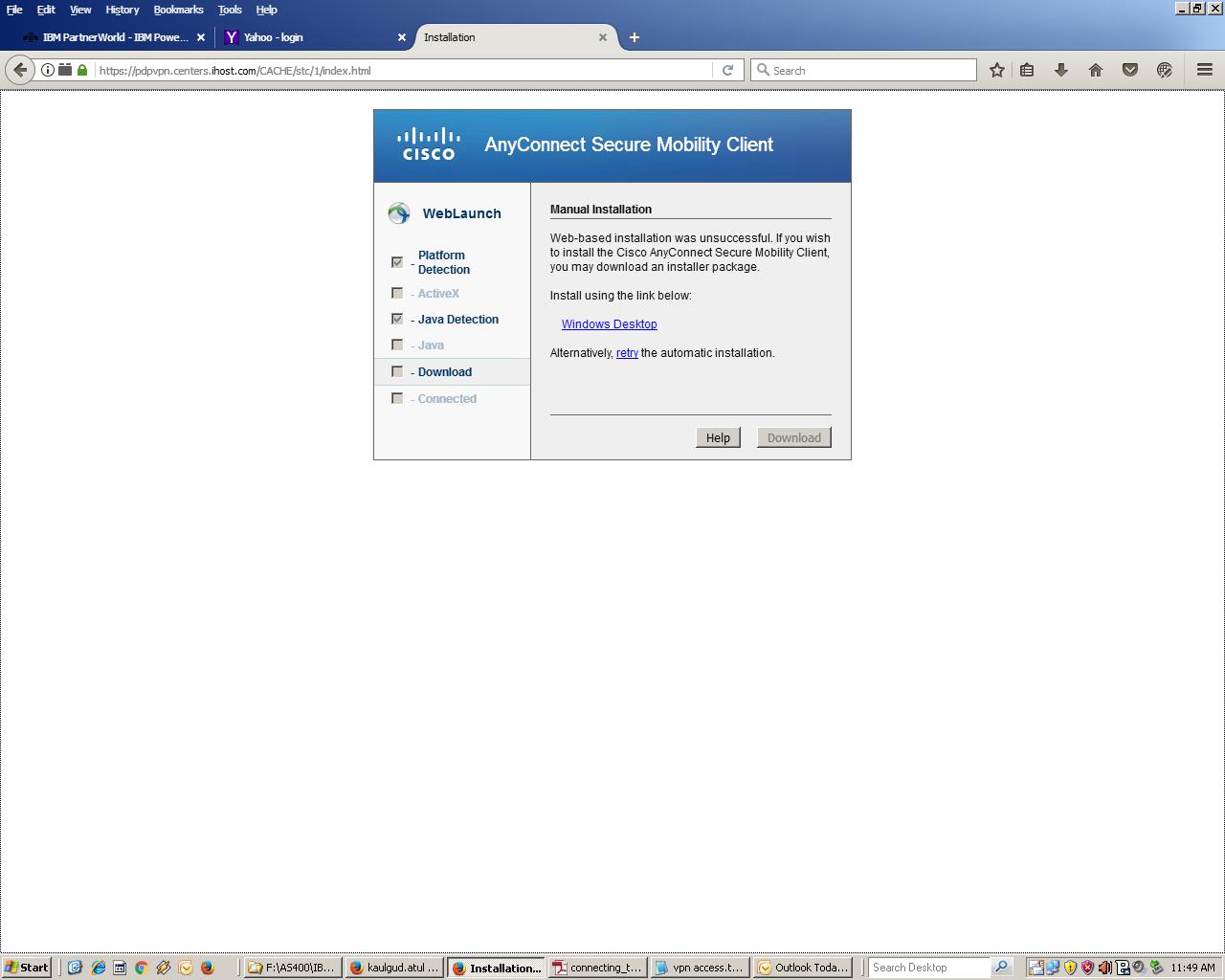

- #CISCO ANYCONNECT MOBILITY CLIENT INTERFACE HOW TO#
- #CISCO ANYCONNECT MOBILITY CLIENT INTERFACE WINDOWS#
This vulnerability is due to incorrect privilege assignment to scripts executed before user logon. Below is my setup, routes before and after connection. I hope to remedy this by manually adding some routes which An圜onnect deletes. (probably also with other versions) I lose access to my LAN.
#CISCO ANYCONNECT MOBILITY CLIENT INTERFACE WINDOWS#
We've contacted Cisco, and they say that this configuration is not supported. A vulnerability in the Network Access Manager (NAM) module of Cisco An圜onnect Secure Mobility Client for Windows could allow an authenticated, local attacker to escalate privileges on an affected device. Whenever I connect to a VPN server using the Cisco An圜onnect Secure Mobility Client v. They are usually only set in response to actions made by you which amount to a request for services, such as setting your privacy preferences, logging in or filling in forms. Note: Firepass SSL VPN from F5 Networks does not suffer the same issue. These cookies are necessary for the website to function and cannot be switched off in our systems.
#CISCO ANYCONNECT MOBILITY CLIENT INTERFACE HOW TO#
We need the Cisco Client to stop doing that.ĭoes anyone know how to make Cisco An圜onnect SSL VPN client stop doing that? To sum up, when the Cisco An圜onnect VPN client connects, it blocks us from all-but-one address associated with the computer. What makes this one IP address special? This one IP address has the virtue of being a “main” address:Īs opposed the addresses we use, which are “additional” addresses: Since I am forced to use An圜onnect to actually have an internet connection. Reply from 10.0.1.4: bytes=32 time<1ms TTL=128 The Cisco An圜onnect Secure Mobility Client is affected by the following vulnerabilities: Arbitrary Program Execution Vulnerability +- The Cisco An圜onnect Secure Mobility Client can be deployed to remote users from the VPN headend, or it can be installed before the endpoint connects to the VPN headend, a process known as pre-deployment. But they both lock down the network interface they are using to connect to the VPN.

This address we can ping and communicate with: C:\Users\ian.AVATOPIA>ping 10.0.1.4 What’s interesting, and might provide a clue, is that there is one address we can communicate with: Pinging 10.0.1.108 with 32 bytes of data: The problem we are experiencing is that we then cannot ping existing IP addresses on \\speeder: C:\Users\ian.AVATOPIA>ping 10.0.1.17 Cisco An圜onnect is an app designed to let you connect securely to VPNs. It is to be expected that we cannot ping Speeder’s IP address on the Cisco VPN adapter (192.168.199.20) because it is on a different subnet than our network (we are 10.0.x.x 255.255.0.0), i.e.: C:\Users\ian.AVATOPIA>ping 192.168.199.20 The routing table on \\speeder shows the multiple IP addresses we have assigned to it:Īfter connecting with the Cisco An圜onnect VPN client:Īnd while there are new routing entries for the Cisco VPN adapter, no existing routing entries were modified after connection: We have a machine for connecting via Cisco SSL VPN ( \\speeder).


 0 kommentar(er)
0 kommentar(er)
